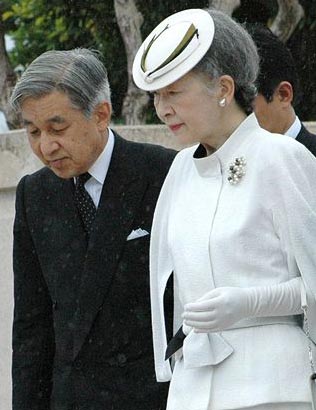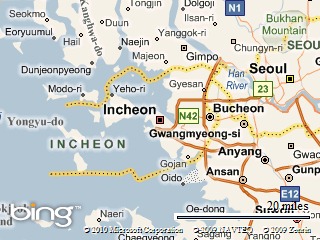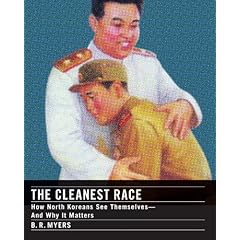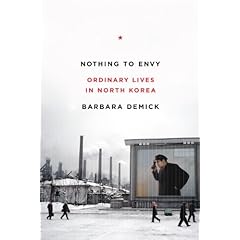February 1, 2010

Osaka may be modern, commercial, and architecturally bland as far as Japanese cities go, but it's always been the ultimate foodie haven. Photo: JNTO
Tokyo has recently been crowned the epicentre of fine dining, but many visitors to Japan regard the entire nation as a gastronome's paradise, writes Joanna Hall.
Anyone who travels to Japan will quickly learn two things: food is a very serious business, and Japanese cuisine isn't all sushi and rice. Although it's a relatively small country, Japan is blessed with an exceptionally rich variety of diverse ingredients and cooking styles.
However Japanese food also has a strong focus on seasonal ingredients, coupled with an endearing attention to detail when it comes to presentation. Even a fast-food bento box, sold at a railway station to a hungry executive on his way home from the office, is arranged with loving care and attention.
Japanese food is undeniably unique among the great cuisines of the world, but it's only been in recent years that the country has come under the spotlight as a fine dining destination.
It all began in the wake of the new millennium, when several world class and celebrity chefs descended on the Japanese capital. In 2005, Gordon Ramsay of Hell's Kit-chen fame opened his first restaurant in Japan at the five-star Conrad Tokyo, and he was followed soon after by others including the acclaimed Monegasque chef, Alain Ducasse.
Then, three years ago the French bible of gastronomy, Michelin, published its first Japanese guide featuring Tokyo. It was the esteemed publishing house's first foray into a destination outside of Europe and the United States, and it awarded an impressive 191 stars to 150 restaurants.
Fast-forward to 2010, however, and Tokyo has finally and formally been declared the epicentre of gourmet dining. In its latest Tokyo guide, Michelin has rated a growing number of worthy establishments - 234 in all - but what has piqued the interest of gourmands worldwide is that 11 received three coveted stars; that's the most for any city on the planet, beating Paris.
When it comes to fine dining, however, visitors to the Japanese capital don't necessarily have to stretch to Michelin-starred prices to enjoy a gastronomic experience.
Conveyor belt sushi might have been invented in Osaka, but it's hard to beat the freshness and diversity on offer in Tokyo, thanks largely to what passes through the world-famous Tsukiji Fish Market. Raw fish aficionados swear by the fare available at the sushi shacks surrounding it, but if you want to avoid the sunrise trek there, and the inevitable wait for a seat, a refined alternative is Central Mikuni's at Tokyo Station.
Owned by the popular local chef, Kiyomi Mikuni, this trendy basement eatery resembles an early-20th-century diner with a lively open kitchen in the centre. Although you can tuck yourself away in a booth, the best fun is sitting around the conveyor belt. It transports plates which are colour coded according to the price, and choices range from traditionally prepared sashimi, to contemporary creations such as spicy Mexican rolls.
The idea of a tofu extravaganza may not appeal to everyone, but a visit to the famed Tokyo Shiba Toufuya-Ukai should be on every gastronome's list. Located next to the historic Shiba Park, only minutes from Roppongi, this elegant establishment is undeniably one of those “only in Japan” experiences. Boasting traditional zashiki-style rooms with exquisite tatami floors, tofu is the primary fare here and it's served in every conceivable form. It's also home grown, made daily using special beans grown in Hokkaido in Japan's more remote north.
Also unique to Tokyo is chanko nabe. It's best known as the food that gives the giant athletes of sumo wrestling their bulk, and one of the most famous restaurants in which to try is Chanko Dining Waka. It's located in Shinjuku, and owned by the retired sumo Grand Champion, Wakanohana.
Chanko nabe isn't a style of cooking as such but a style of eating, and a much-loved production encapsulating Japanese cuisine perfectly. It starts with the ceremony of a nabe pot of delicious broth being brought to the table, heated on a portable burner, then filled with meat or seafood and vegetables which are cooked at various stages.
While Tokyo may have been crowned the world's gastronomic capital, the contributions of proud neighbouring cities, Osaka and Kyoto, have now also been recognised. In October last year, Michelin launched another new 2010 guide featuring 203 establishments from both cities, confirming them as hot new destinations for gourmet travellers.
Osaka may be modern, commercial, and architecturally bland as Japanese cities go, but as any local will tell you, it's always been the ultimate “gastronomes" haven. So strong is the Osakan passion for food, that the Japanese have bestowed a special term upon the city called “kuidaore”, which roughly means “to ruin oneself by extravagance in food”.
From unusual local delicacies sold on street stalls, to five-star restaurants where you can blow a week's wages, there's food at every turn. Just a few of the city's unique dishes include balls of fried dough stuffed with octopus called takoyaki, a special grilled squid called ikayaki, and Osaka udon - soft, thick and simply delicious white noodles served in a broth.
One of the essential Osakan dining experiences, however, is okonomiyaki - a kind of Japanese pancake or pizza - and for a gourmet experience, locals and visitors alike are often found at the five-level Okonomiyaki Restaurant Chibo. Located near the Namba subway station, this hearty meal features whipped eggs cooked on a hot plate and stuffed with pork, pasta, cheese and seafood. The chefs cook it to order, then bring it to your table on a hot griddle so you can graze.
For a more substantial dining experience, however, you can venture to Hanagatami at the elegant Ritz-Carlton Osaka. Boasting a lavish Japanese inspired decor, this restaurant specialises in traditional kaiseki cuisine, which is a fancy term for a gut-busting multi-course meal consisting of sushi, sashimi, tofu, soup, fish, vegetables, a hot pot and desert.
Kyoto may only be 43 kilometres from Osaka, but as Japanese cities go it couldn't be more different. It's the cultural heart of Japan, an elegant, conservative city dotted with temples, Shinto shrines and an authentic geisha zone, all of which lure more than 40 million visitors a year.
When it comes to cuisine, Kyoto is famous for many alluring foods including tofu. This is largely due to an abundance of underground springs producing pure, soft water - an important element in making tofu - as well as the local production of some of Japan's best quality soybeans. However Kyoto is also famous for traditional Japanese guest houses called ryokans, and some of these have now been recognised in the new Michelin guide as essential places to eat.
One definitely worth splashing out on for an overnight stay and a gourmet dinner is Nishiyama, a beautiful ryokan close to City Hall in the heart of Kyoto. Ryokans also tend to specialise in kaiseki cuisine, and this one is no exception. It offers guests expansive multi-course menus which change with the seasons, but if you prefer to be less adventurous, you can also opt for the year-round shabu shabu, a delicious hot pot consisting of simmered vegetables, tofu and meat in a soup.
For gastronomes, however, a visit to Kyoto should also include time for dinner at Kanga-an - one of the city's best kept secrets. Although reservations need to be made several days in advance, this alluring exotic temple restaurant is worth the effort. Widely regarded as one of Kyoto's top restaurants, it's located north of the Imperial Palace and serves an ancient vegetarian style of cuisine called fucha ryori.
Following in true Japanese form it's another multi-course indulgence, but in this eatery food isn't the only appeal. Tucked away in a genteel residential area, Kanga-an is traditional, opulent, and bathed in lantern light and serene tranquility, so much so that you could be forgiven for believing that you are being fed a banquet in the Emperor's holiday home.
From sushi to noodles, and okonomiyaki to kaiseki cuisine, the experience of Japanese cuisine is a gastronome's delight, as well as a feast for all the senses. For visitors to this enigmatic country, however, there will be challenges, largely choosing what, and where, to indulge their taste buds.
The writer travelled with assistance from the Japan National Tourism Organisation.
Fast Facts
TOKYO:
Tokyo Shiba Toufuya-Ukai, 4-4-13 Shiba-Koen, Minato-ku, Tokyo, 03 3436 1028
Central Mikuni's, 1-9-1 Marunouchi, Tokyo, 03 5218 5123
Chanko Dining Waka, 1-6-2 T-Wing B1F, Kabukicho, Shinjuku, Tokyo, 03 5292 4527
OSAKA:
Okonomiyaki Restaurant Chibo, Michikaze Building, 1/2F, 11-27 Namba sennichimae, Chuo-ku, Osaka, 06 6643 0111.
Hanagatami, Ritz-Carlton Osaka, 2-5-25 Umeda, Kita-ku, Osaka, 06 6343 7000
KYOTO:
Nishiyama Ryokan, Nijo-Sagaru-Gokomachi, Nakagyo-ku, Kyoto, 07 5222 1166
Kanga-an, 278 Higashi Kuramaguchi Karasuma, Kita-ku, Kyoto, 07 5256 2480
View Article in The Sydney Morning Herald
 Feb 2 04:49 AM US/Eastern
Feb 2 04:49 AM US/Eastern






























